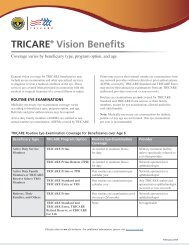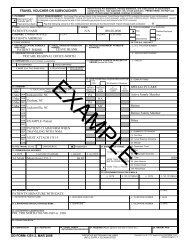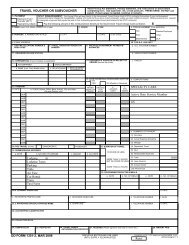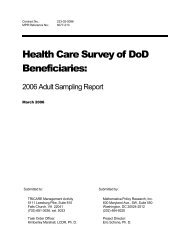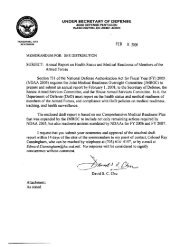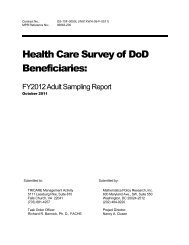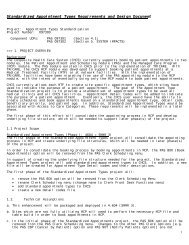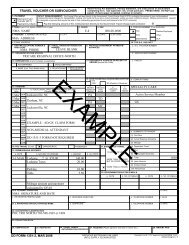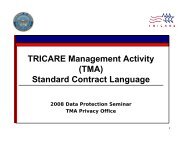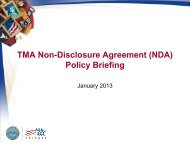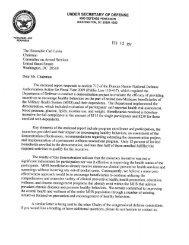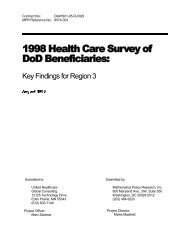Medical Management Guide, 2009, Version 3.0 - Tricare
Medical Management Guide, 2009, Version 3.0 - Tricare
Medical Management Guide, 2009, Version 3.0 - Tricare
- No tags were found...
You also want an ePaper? Increase the reach of your titles
YUMPU automatically turns print PDFs into web optimized ePapers that Google loves.
Page 38Utilization <strong>Management</strong> <strong>Version</strong> <strong>3.0</strong><strong>Medical</strong> <strong>Management</strong> <strong>Guide</strong>support criteria. Clearly identifying recommendedreferral points can decrease inappropriate referralsand improve the timeliness of appropriate referrals.The administrative component of RM relatesprimarily to managing the electronic transmissionof specialty referral requests from the MTF to theMCSC, to include ensuring referrals meet accessand continuity of care standards.Administrative staff need to closely monitor andtrack the return of referral results. Tracking ofreferrals encompasses monitoring, timeliness ofresult return, and legibility. The utilization managerinitiates services by sending a referral to theManaged Care Support Contractor (MCSC) (seealso Section I, <strong>Medical</strong> <strong>Management</strong> Essentials,TRICARE and Other Benefit Programs, Workingwith Managed Care Support Contractors).Contact the MCSC in your region on how toappropriately send a referral.With contract modifications, the MCSC performsbenefit and medical necessity reviews for all patientsexcept ADSMs. RMC staff must perform benefitand medical necessity reviews for ADSMs sincethe MCSC will not deny their care. However, theMTF may establish its own internal review processto select referrals for appropriateness and medicalnecessity.Additionally, red flag situations such as the followingmay require further review:• Travel• Out-of-area care• Non-network provider requests• Continuity of care• Care following PCS enrollmentThe MTF should have an established process toappropriately respond and coordinate high-expenserequests. However, these items are available to thebeneficiary but should be closely reviewed for costcontainment and appropriately addressed by MTFstaff prior to “defer to network.”The following are some tips for implementing asuccessful RM program:• Perform retrospective reviews to validatereferral patterns.• Evaluate the appropriateness of referrals forADSMs and the strategy for further review.• Evaluate multiple referrals for quality andcontinuity of care (e.g., referrals for newversus established patients).• Maintain current capabilities list to facilitateRight of First Refusal (ROFR) opportunities.• Monitor access for specialty appointmentswithin the MTFs through sound templatemanagement.• Identify opportunities to refer patients forCM or DM.• Collaborate and coordinate processes andproblem resolution with the MCSC.• Educate patients and staff about the referralprocess.• Establish a tracking process to account for 100percent referrals.Referral <strong>Management</strong> Center (RMC)The ASD (HA)/TMA have mandated theestablishment of a Referral <strong>Management</strong> Center(RMC) within each MTF or multi-service market.The RMC functions as the primary source forprocessing specialty referrals. With the exceptionof multi-service markets, the RMC should be



